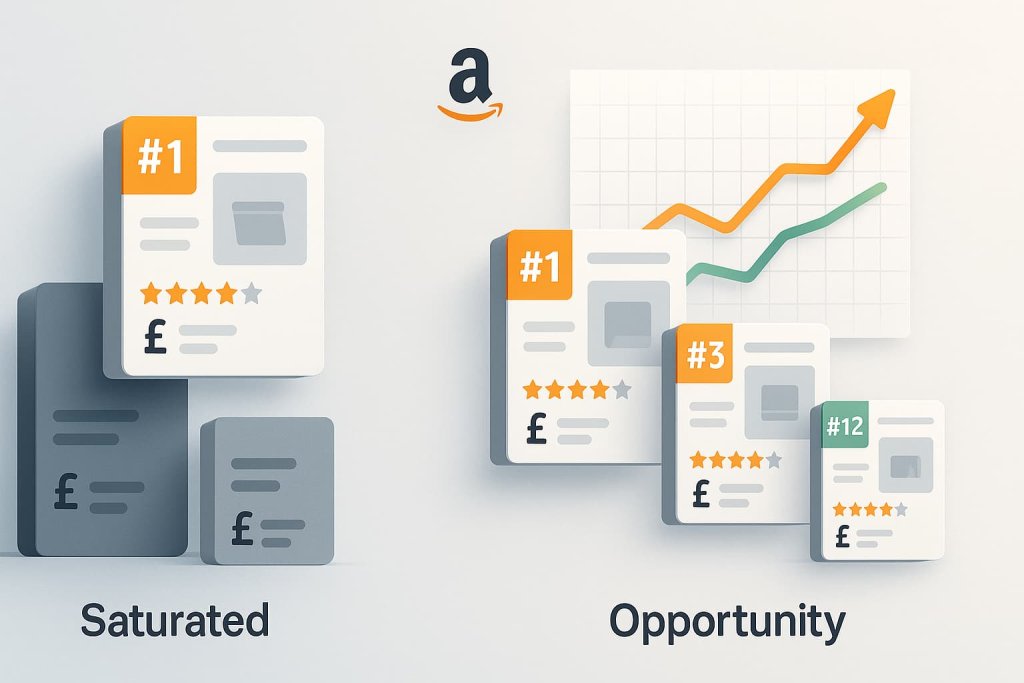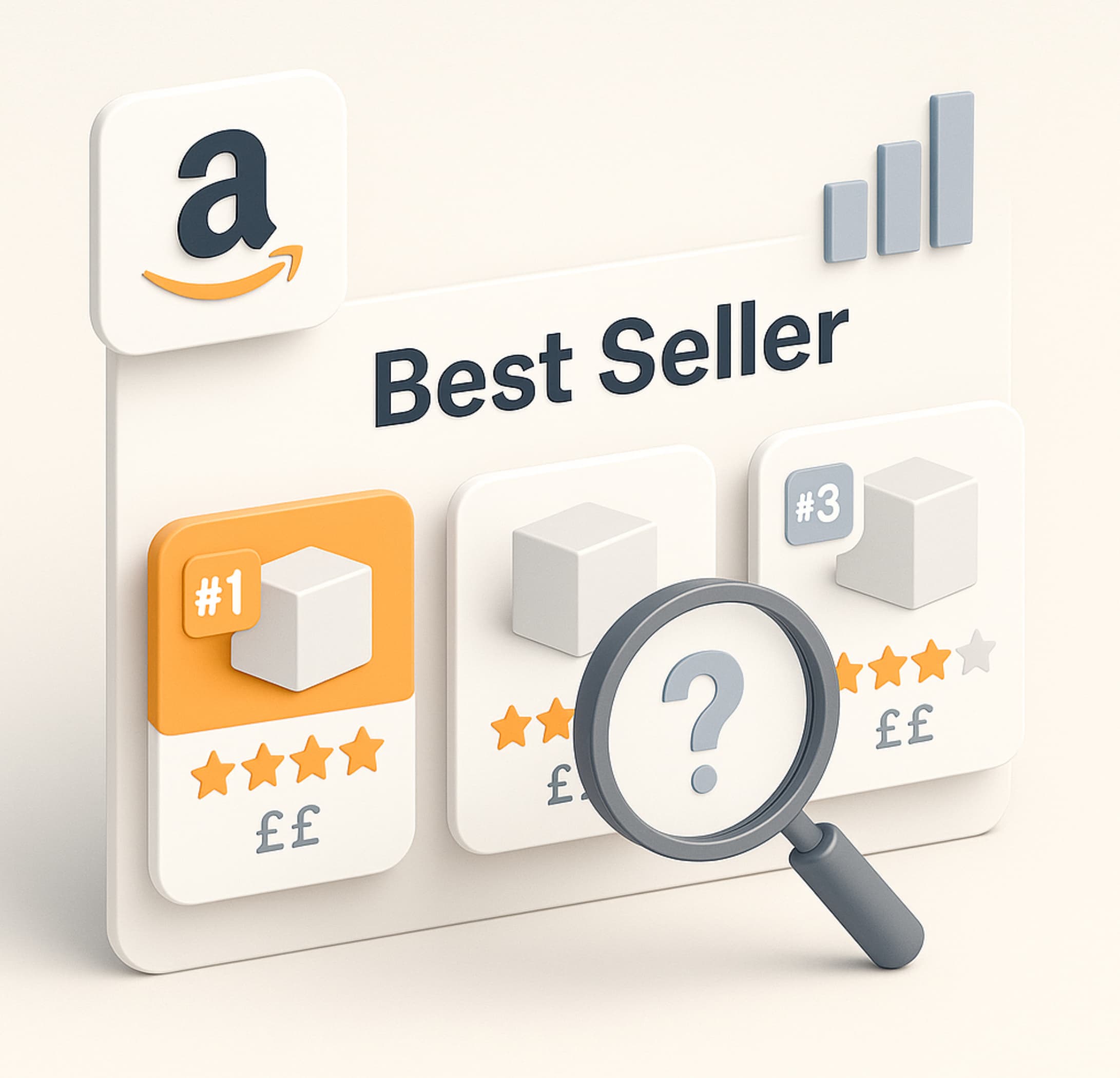Using Amazon’s Best Seller Rankings to Spot Market Gaps
21 June 2025Most sellers on Amazon regard the coveted Best Seller badge as the ultimate sign of success – a clear indicator of market dominance. Yet, beneath its shiny surface, the Amazon Best Seller Rankings (BSR) offer far richer insights than mere bragging rights. If leveraged thoughtfully, BSR can become one of your most powerful tools for spotting hidden opportunities and gaining a strategic advantage. In this article, we’ll explore how a deeper understanding of BSR data can help you identify market gaps, inform your product strategy, and achieve sustainable growth.
What the Amazon Best Seller Rankings Really Show
Amazon’s Best Seller Rankings reflect a product’s sales velocity relative to other products within the same category or sub-category. This ranking is dynamic, shifting continually with changing consumer preferences and sales trends. It provides an at-a-glance measure of market popularity, but doesn’t directly disclose exact sales volumes or profitability margins. Thus, BSR serves as a powerful directional indicator rather than a precise financial metric. Understanding this nuance is essential: BSR tells you what’s selling, not necessarily what’s profitable – and definitely not why it’s selling.
Using BSR Trends to Identify Underserved Niches
One of the most valuable, yet often overlooked, applications of BSR is in detecting underserved market niches. By carefully observing shifts and trends in BSR data, you can pinpoint product categories that are experiencing growth, yet remain relatively unexplored by other sellers. For example, products consistently climbing the rankings without intense competition may suggest emerging demand with insufficient supply. Tracking these movements closely allows you to position yourself early, capitalising on growth rather than playing catch-up.
These shifts might be subtle at first, presenting themselves as modest, steady improvements in rankings rather than dramatic leaps. Nevertheless, they’re meaningful indicators that consumer interest is quietly building, highlighting fertile ground for new product launches or brand extensions. Being among the first to spot such niches can dramatically improve your competitive positioning and long-term profitability.
Spotting Saturation vs. Opportunity

Not all BSR data points to opportunity, however. Sometimes, rankings can highlight a market that is already overly crowded. How do you distinguish genuine opportunity from a saturated niche? A good starting point is comparing the BSR of leading products against second- and third-tier listings. If only a few top products dominate with consistently low rankings, leaving others lagging far behind, this signals an intensely competitive, saturated market.
Conversely, niches where products across multiple tiers maintain relatively steady rankings indicate room for new entrants. Less competition at the lower end of the rankings often means you can carve out market share without aggressive price-cutting or hefty advertising budgets. In short, interpreting the full breadth of BSR data is vital for accurately identifying truly attractive opportunities.
Analysing Adjacent Categories and Bundling Opportunities
Beyond individual product categories, BSR can also illuminate opportunities through adjacent or complementary categories. Analysing related products often reveals gaps you hadn’t previously considered, providing ideas for strategic bundling or cross-selling initiatives. For instance, a surge in sales for home workout equipment might hint at an overlooked demand for complementary items such as exercise mats or resistance bands.
Rather than simply copying successful products, analysing adjacent BSR trends enables you to think creatively about broader customer needs. By bundling related items or strategically cross-promoting products, you increase perceived value, differentiate your offerings, and enhance customer satisfaction – all while boosting your average order value.
Tools to Track and Interpret BSR More Effectively
To make the most of BSR data, it’s crucial to leverage specialised tracking tools. Platforms like Keepa, Helium 10, and Jungle Scout offer comprehensive capabilities to track historical ranking data, monitor competitor performance, and visualise long-term trends. These tools enable you to quickly identify emerging opportunities, recognise seasonal trends, and measure the longevity of demand spikes.
Yet, successful market analysis requires more than raw data. It demands a thoughtful interpretation of patterns and trends. The goal isn’t merely to gather data, but to translate it into actionable insights that drive informed product strategies and smarter decision-making.
Turning Insight into Actionable Product Strategy
Identifying market gaps through BSR analysis is only the first step. The true value lies in turning these insights into practical, market-ready strategies. Validate your findings through keyword research, competitor analysis, and feasibility checks with suppliers. Understand why particular products succeed or fail, and ensure your solution addresses genuine customer needs rather than fleeting trends.
BSR data should form part of your wider product development strategy, guiding decisions on product features, pricing strategies, and promotional approaches. It’s a powerful, foundational resource, but most effective when complemented by comprehensive market research and thoughtful strategic planning.
The Strategic Power of BSR
Ultimately, Amazon’s Best Seller Rankings provide much more than a surface-level snapshot of popularity. Used strategically, they offer a nuanced, data-driven pathway to uncovering hidden market opportunities, spotting genuine product gaps, and making informed decisions that propel long-term growth. Understanding the broader implications behind ranking movements positions you to stay ahead of trends, anticipate market shifts, and capitalise effectively on consumer demand.
Want to turn data into competitive advantage? Book your free consultation with Ascend’s Amazon account management team and let us help you uncover market potential.
